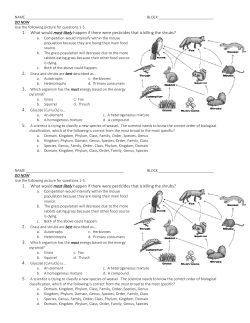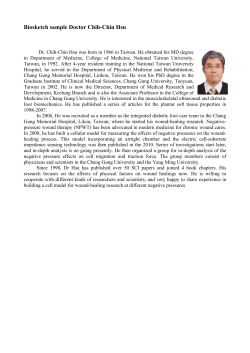
Lab Exercise 5 – Complex Numbers Lab Exercises
Lab Exercises Instructed by Ku-Yaw Chang Lab Exercise 5 – Complex Numbers ID: : Name: : Date: : Lab Objectives In this lab, you will practice: Creating new data types by writing class definitions. Defining member functions of programmer-defined classes. Instantiating objects from programmer-defined classes. Calling member functions of programmer-defined classes. The follow-up questions and activities will also give you practice: Initializing programmer-defined class data members with class constructors. Description of the Problem Create a class called Complex for performing arithmetic with complex numbers. Write a program to test your class. Complex numbers have the form realPart + imaginaryPart * i where i is √-1 Use double variables to represent the private data of the class. Provide a constructor that enables an object of this class to be initialized when it is declared. The constructor should contain default values in case no initializers are provided. Provide public member functions that perform the following tasks: a) Adding two Complex numbers: The real parts are added together and the imaginary parts are added together. b) Subtracting two Complex numbers: The real part of the right operand is subtracted from the real part of the left operand and the imaginary part of the right operand is subtracted from the imaginary part of the left operand. c) Printing Complex numbers in the form (a, b) where a is the real part and b is the imaginary part. Sample Output (1, 7) + (9, 2) = (10, 9) (10, 1) - (11, 5) = (-1, -4) 1 Lab Exercises Instructed by Ku-Yaw Chang Problem-Solving Tips 1. In this lab, you must write the definition for class Complex. Use the details provided in the member definition (Complex.cpp) file to assist you. 2. Remember to use member-access specifiers public and private to specify the access level of data members and functions. Carefully consider which access specifier to use for each class member. In general, data members should be private and member functions should be public. Follow-Up Questions and Activities 1. Why do you think const was used in the parameter list of add and subtract? 2. Can add and subtract’s parameters be passed by value instead of by reference? How might this affect the design of class Complex? Write a new class definition that illustrates how the parameters would be passed by value. 3. Declare a Complex number, as follows, without passing any arguments to the constructor. What happens? Does the default constructor get called? Complex a; 2
© Copyright 2025





















